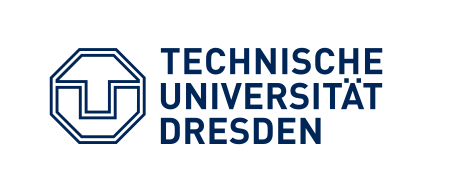Keynote Speakers
Currently, ten keynote speakers confirmed their participation in the 2024 ECPPM conference.
Keynotes will cover a broad range of topics from Architecture, Civil Engineering, Robotics,
Building Information Modelling, and Educational Science.
Léon
van Berlo
(building Smart International, The Netherlands)
Prof. em. Thomas Bock
(TU München, Robotics, Germany)
Prof. Renate Fruchter
(Stanford University, CIFE, Director PBL, USA)
Prof. Timo Hartmann
(TU Berlin, Germany, Systems Engineering,
Editor Journal Advanced Engineering Informatics)
Prof. Manfred Krafczyk
(TU Braunschweig, Vice-President, Civil Engineering, Germany)
Prof. Zhiliang Ma
(Tsinghua University, Beijing, China)
Prof. Dr. Ardeshir Mahdavi
(TU Graz, Building Physiscs, Austria)
Prof. em. Gerhart Schmitt
(ETH Zurich, Switzerland retired Vice-President, Founder ETH Campus Singapore)
Prof. Ziga Turk
(University Ljubljana, Slovenia former Minister of Slovenian Government)
Dr. Alain Zarli
(Head, European Construction Technology Platform, Brussels )
Short CVs of our Keynote Speakers are available below.
Léon van Berlo
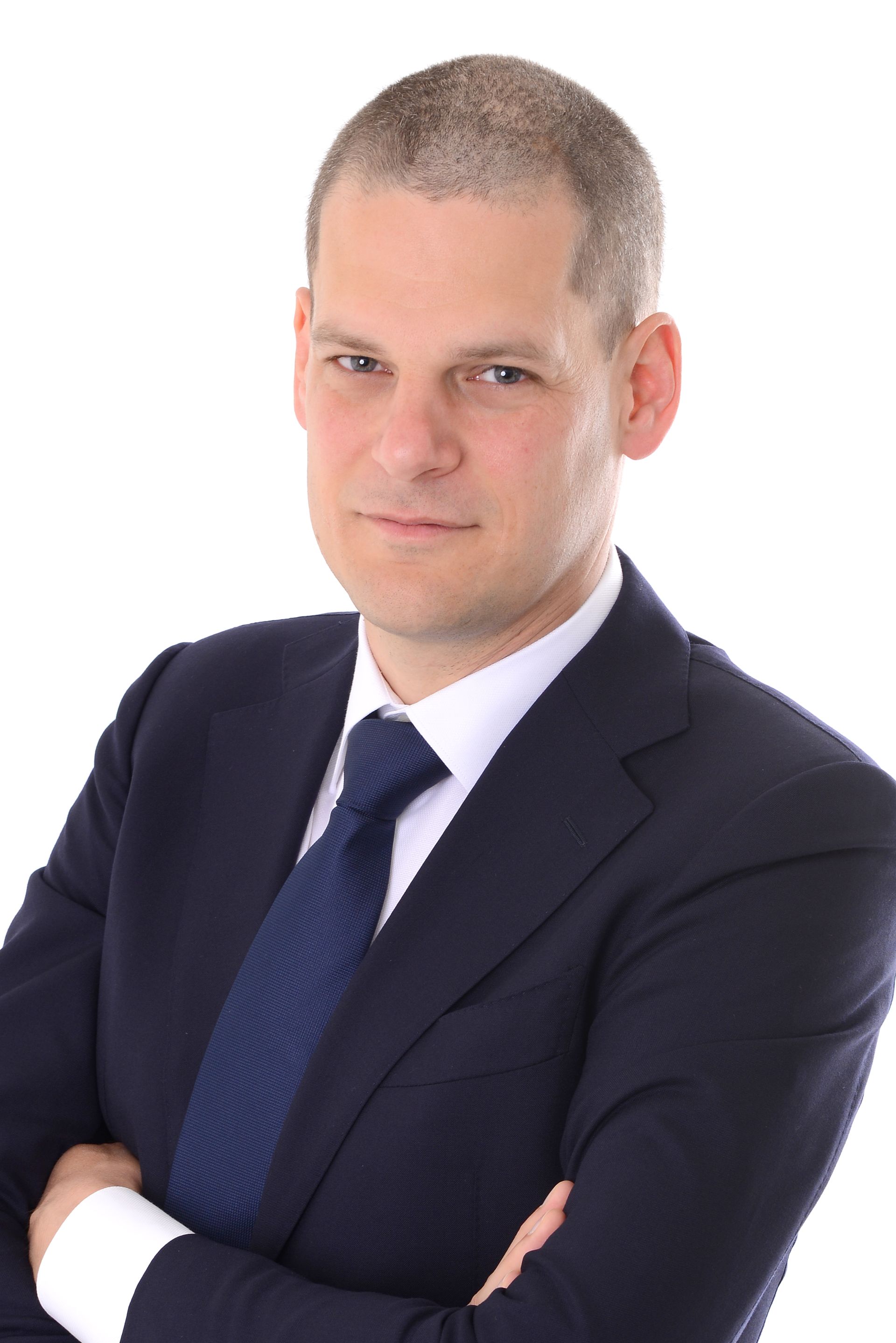
View Biographical Sketch
Léon van Berlo is an Architectural Engineer and a highly accomplished entrepreneur with extensive experience in the construction industry, Building Information Modelling (BIM), and Geographic Information Systems (GIS). With a foundation in carpentry and architectural engineering, Léon has cultivated a diverse skill set that spans various fields.
From a young age, Léon displayed an entrepreneurial spirit, initiating ventures in industries ranging from bicycle brands to publishing companies. Simultaneously, he pursued a career in construction, focusing on the use of automation to improve industry processes. His expertise in collaborative design and engineering allowed him to make significant advancements in his field. While working at the Dutch national innovation institute, Léon identified the potential of open-source solutions for the construction sector. As a result, he spearheaded the development of the open-source BIM server initiative, which has since made a considerable impact on the industry. Additionally, Léon has published numerous tools, papers, and articles on digitalisation and automation, further solidifying his position as an industry expert.
Throughout his career, Léon has actively contributed to the development of open standards in both BIM and GIS. His dedication to collaboration and sharing knowledge has helped shape the way these sectors operate today. In 2019, Léon joined buildingSMART International, a leading organisation in the promotion of open standards for BIM, as their Technical Director. In this role, he continues to drive advancements in automation, helping the construction industry become more productive, efficient, and sustainable.
Léon van Berlo's achievements showcase his passion for the construction industry, and his expertise in automation, BIM, and GIS has significantly impacted the sector. As a thought leader and industry influencer, Léon continues to make waves with his cutting-edge insights and innovative solutions.
Topic
"After 30 years of IFC, what is next for openBIM?”
Abstract
The Industry Foundation Classes (IFC) have been instrumental in revolutionizing Building Information Modeling (BIM) since their inception almost three decades ago. This presentation examines the transformative journey of IFCs in enabling interoperability and standardization in the AEC (Architecture, Engineering, and Construction) industry. As we celebrate almost 30 years of IFC, the focus shifts to the future of openBIM and the emerging trends that will shape its evolution. The presentation will explore how openBIM can enhance collaborative workflows and data exchange in an era of growing complexity in construction projects. By analyzing current challenges and opportunities, we aim to provide a comprehensive outlook on how the next generation of openBIM standards and technologies can further drive innovation, efficiency, and sustainability in the built environment. Attendees will gain insights into the strategic directions and technological advancements poised to redefine the landscape of BIM and the AEC industry in the coming years.
Prof. em. Thomas Bock
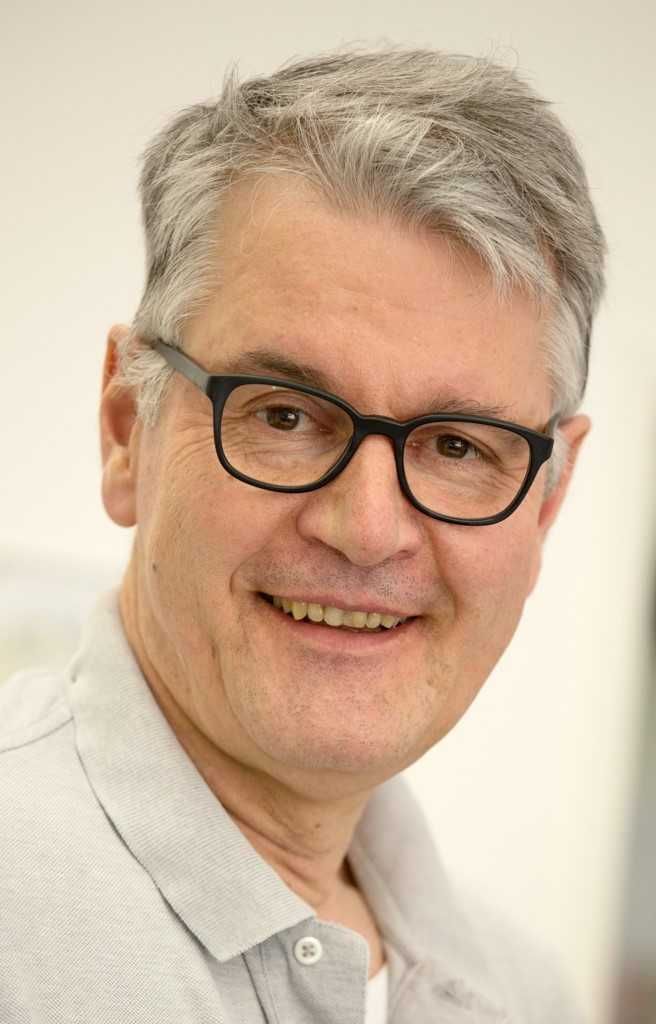
View Biographical Sketch
Prof. Bock's research activities center since 45 years on robotic construction as design, prefabrication, on site robotics, robotic building maintenance and recycling. His notion of robotic ambience empower elderly for independent life, work and mobility. He studied at the University of Stuttgart, IIT in Chicago and the University of Tokyo. At the CNRS in France he established first European construction robotics commission in Europe. In 1989 he became professor for automation in construction management at the civil engineering faculty of Karlsruhe University before becoming chair professor for building realization and robotics in 1997 at TU Munich. He is the cofounder and director of IAARC, Asian Habitat Society etc. and advices international ministries and academies. In 2017 he obtained the DFG Seibold award for 45 years pioneering research in construction robotics. He co/authored about 535 articles in English, French, Japanese, Russian and German and holds various honorary professorships, doctorship, fellowship, visiting and special assigned professorships, is involved in editing several journals “Automation in Construction”, “Innovation in Construction”, “Construction Robotics” etc., publishes the world wide first book series on “Construction Robotics” with Cambridge University Press since 2015 and edits a special edition on active healthy aging at Journal of Population Aging of Oxford University Press in spring 2020.
Visit Prof. Bock's homepage at www.rod.de to explore his extensive contributions to the field of construction robotics and automation.y
Topic
“The Robotics Way”
Abstract
The construction industry, building real estate, and infrastructure sector face more and more challenges:
High interest rates, labor shortage, time and cost overruns, quality defects, maintenance-repair-restoration overload, low ROI (return on investment), occupational diseases, aging workforce, high rents, unaffordable housing, wasteful construction, and demographic challenges of an aging society...
Conventional construction methods have reached their limits:
We need a new kind of know-how to tackle these challenges; we need the robotic way. It extends the notion of ECPPM (Enterprise Construction Project Performance Management) into the future with a special emphasis on "robotics" within ECPPM.
Construction and building robotic solutions for our society:
This talk shows how construction automation and robotics offer better process and product solutions by ROD (Robot Oriented Design) in off/on-site industrialization for affordable housing, consistent quality, safe and usable infrastructure, rapid return on investment, faster availability, labor shortage, better social adaptability, circular construction by robotic disassembly, solutions for independent and inclusive living in an aging society, etc.
Prof. Dr. Renate Fruchter

View Biographical Sketch
Dr. Renate Fruchter is the founding director of the Project Based Learning Laboratory (PBL Lab), lecturer in the Department of Civil and Environmental Engineering, and Senior Research Engineer thrust leader of “Collaboration Technologies” at the Center for Integrated Facilities Engineering (CIFE), at Stanford. She received her Civil Engineering Diploma from the Institute for Civil Engineering, Bucharest, Romania. She received her M.Sc. and Ph.D. from the Technion – Israel Institute of Technology. Her R&D focuses on collaboration technologies in support of cross-disciplinary, geographically distributed teamwork in education and corporate settings. Over the years her research team developed and deployed innovative collaboration technologies for virtual team building, synchronous and asynchronous knowledge capture, sharing and re-use, project memory, corporate memory, and mobile solutions for global teamwork and e-Learning. She is a designer of physical and virtual interactive learning and workspaces. She studies the relation between technology-people-place-process. These studies focus on the impact of technology on learning, engagement, knowledge work productivity, emergent work practices and processes, team dynamics, and assessment. She is the developer of the innovative "Architecture, Engineering, Construction (AEC) Global Teamwork" course launched in 1993 engaging university and industry partners worldwide. Her latest projects focus on: (1) big data analytics and visualization towards harmonizing occupant well-being and building sustainable performance; and (2) accelerating creativity and engagement in global teamwork through VR, AI, and parametric modeling.
Topic
Continuing the AEC Education Journey in the Era of Construction 4.0
Abstract
We find ourselves in the midst of the 4th industrial revolution that is transforming the building industry as well. It is a time when the physical and digital worlds merge; where generative AI, machine learning, VR/AR/MR/XR, robotics, autonomous mobility continuously reshape how and where we live, learn, and interact. Convergence of these emergent technologies can act as exponential accelerators.
How will these rapid technological advancements transform Architecture, Engineering, and Construction (AEC) education? How will such technologies empower the learner to explore broader solution spaces, augment co-creation and collaboration, and make evidence-based, agile, joint multi-discipline decisions?
While AEC education is evolving to align with the demands of the 21st Century and Construction 4.0, it faces several challenges in preparing the next generation of professionals. Addressing these challenges requires a proactive and collaborative approach, involving educators, industry professionals, and policymakers to ensure that AEC education effectively prepares the next generation for the complexities of Construction 4.0 and the broader demands of the 21st Century. This talk delves into opportunities to re-imagine education integrating emerging technology toolsets, to developing new skillsets and mindsets towards preparing the next generation of industry professionals.
Join me as we navigate the future of AEC education, exploring strategies to shape the next generation of industry professionals in the era of Construction 4.0 and the challenging demands of the 21st Century.
Prof. Dr. Timo Hartmann
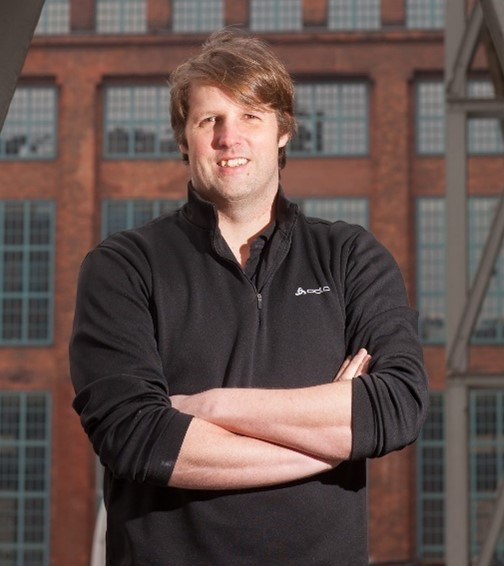
View Biographical Sketch
Timo is intrigued by the working processes of construction, engineering, and architectural professionals and how they design the complex engineering systems that keep our societies ticking, moving, and thriving. While he is in awe of how engineers are able to deal with the complexity of their designs, he tries to provide managerial and technical solutions that improve how they work. He believes in the digitalization of the industry in the sense that computational tools have the potential to allow engineers to design significantly different than they were able before – individually, but more importantly together in integrated engineering efforts. To develop such tools, it is important to consider both technical and social factors working in close collaboration with practitioners.
Timo received a Ph.D. from Stanford University where he was a student at the Center for Integrated Facility Management. His work has been published in Advanced Engineering Informatics, the Journal of Construction Engineering and Management, Building Research and Information, Journal of Computing in Civil Engineering, Design Studies, or ITCON. He is the handling editor of Advanced Engineering Informatics where we explore the science of engineering knowledge formulation with computational methods and Engineering, Construction, and Architectural Management where we would like to explore how to best manage collaborative and integrated engineering projects.
Topic
Towards lean projects - Is AI and ubiquitous computing only for management or can we empower workers?
Abstract
By large lean project management thinking and technologies to support lean projects has focused on supporting management levels by providing better means for project control and monitoring. On the EU funded project SEISMEC (https://seismec.eu/) we started exploring worker centric means for how AI and ubiquitous computing methods can be used to empower workers. We believe that true empowerment of workers requires to balance four aspects with respect to a technology: (C) Collaboration and Creativity; (A) Autonomy and Automation; (P) Privacy and Productivity; (S) Safety and Job Satisfaction. In the talk I will introduce the CAPS criteria and show provide some early discussions how how the CAPS criteria apply to safety management in construction and asset management of airport facilities. I will argue that by being able to balance CAPS criteria during the implementation of AI and ubiquitous technology on construction projects workers can be empowered. Worker empowerment in turn allows to reduce wasteful management and control activities on projects and provide a means to a more lean practice. Closing the talk, I will also introduce a methodological framework for how to best understand CAPS in relation to AI and ubiquitous technology implementation across industries.
Prof. Dr.-Ing. habil. Manfred Krafczyk
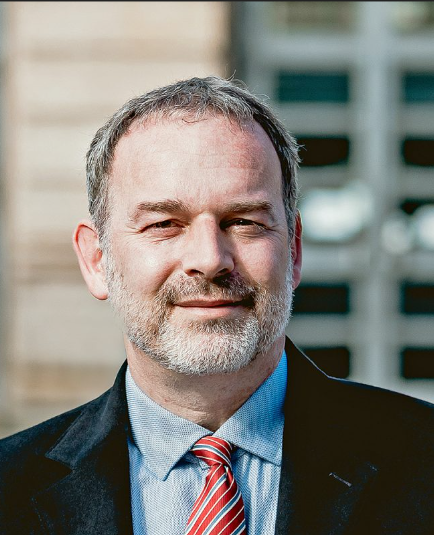
View Biographical Sketch
Prof. Dr.-Ing. habil. Manfred Krafczyk is a renowned professor and head of the Institute for Computational Modeling in Civil Engineering at TU Braunschweig in Germany. He started his academic journey with a Physics Diploma from TU Dortmund in 1991 and earned his Ph.D. in Engineering in 1995. He became a professor after completing his professorial thesis at TU München in 2001.
Prof. Krafczyk has had a significant career in academia. He began with a scholarship from Siemens AG, followed by a postdoctoral position at TU Dortmund. He then worked as an Assistant Professor at TU München before his current role at TU Braunschweig starting in 2001.
As a respected figure in the scientific community, Prof. Krafczyk's insights into complex fluid dynamics and engineering simulations are invaluable. His work paves the way for innovative approaches in various engineering applications, from building energy simulation to biomedical flow modeling.
Topic
From Delegation to Integration – Challenges and Opportunities of AI in Modeling Engineering Systems
Abstract
Recently, Large Language Models as a subset of Artificial Intelligence (AI) methods have triggered much attention as potentially versatile and powerful approaches to extract information from large data sets and knowledge mining. This naturally raises the question how suitable these models are to model engineering systems including the prediction of their behaviour. While there is ample evidence in the literature that data-driven models have a huge potential to substantially contribute to efficient modeling of such systems, fundamental aspects such as quality ensurance and reliability are still active fields of research. In this presentation I will discuss some fundamental challenges and opportunities of data-driven approaches in general and LLMs in particular specifically in contrast to existing modeling approaches in computational engineering. Finally, I will address some of the resulting challenges for our present curricula in engineering education.
Prof. Dr. Ma Zhiliang

View Biographical Sketch
Professor Ma Zhiliang, a prominent academic in the field of civil engineering, currently holds the prestigious position of Professor and Doctoral Supervisor at Tsinghua University's Department of Civil Engineering. His journey in academia began with a Bachelor of Engineering from Tsinghua University (1981-1986), followed by postgraduate studies in Japan at Nagoya University, where he earned a Master's (1987-1989) and a Doctorate (1989-1992) in Engineering.
Prof. Ma's career has been marked by significant contributions to the field of civil engineering, especially in the realms of Building Information Modelling (BIM), Intelligent Construction Technology, and Information Management in Construction Enterprises. His academic prowess is evident in the range of courses he has taught, spanning both undergraduate and graduate levels, with a focus on Civil Engineering CAD Technology, Engineering Computer-Aided Design, and Object-Oriented Design Methods.
An influential figure in his field, Prof. Ma has been involved in numerous pivotal research projects, including several focusing on BIM applications for prefabricated concrete buildings and the advancement of construction automation technologies. His work in these areas has not only enriched academic discourse but also significantly impacted practical methodologies in civil engineering. Prof. Ma's dedication to education and research continues to shape the future of civil engineering technology and practices.
Topic
Specialization of Generative LLMs for Application in Construction: Taking Named Entity
Recognition as Example
Abstract
Since 2023, generative LLMs (Large Language Models) represented by GPT-4 (Generative Pre-training Transformer-4), have shown impressive performance. However, it needs to be specialized to be applied satisfactorily in special fields, such as construction. The authors have been exploring the methods for the specialization in construction. This presentation analyzes the requirement for the specialization and introduces a method that we developed based on fine-tuning of LLMs for NER (Named Entity Recognition) of construction documents as an example. In traditional methods of NER, machine learning has been used, but they rely on large high-quality datasets that are manually made, which is costly to obtain in construction.
To solve the problem, a method for NER based on fine-tuning of LLMs is developed for information extraction of construction documents. Firstly, low-quality datasets are semi-automatically generated from national standards, professional qualification textbooks, input method editor lexicons, including a generation-type dataset, a tagging-type dataset, and a question-answering dataset. Then, the above datasets are used to fine-tune an LLM for NER of structural elements to obtain optimal parametric conditions for fine-tuning. Finally, the optimal conditions are used to fine-tune the LLM and the latter was evaluated based on an established dataset and evaluation rules. The accuracy and completeness of the method are significantly improved compared to the LLM before fine-tuning, proving that the method works well. The generalizability of the method has been justified as well. The method showcases the way to obtain a method for the specialization of LLMs for its application in construction.
Prof. Dr. Ardeshir Mahdavi
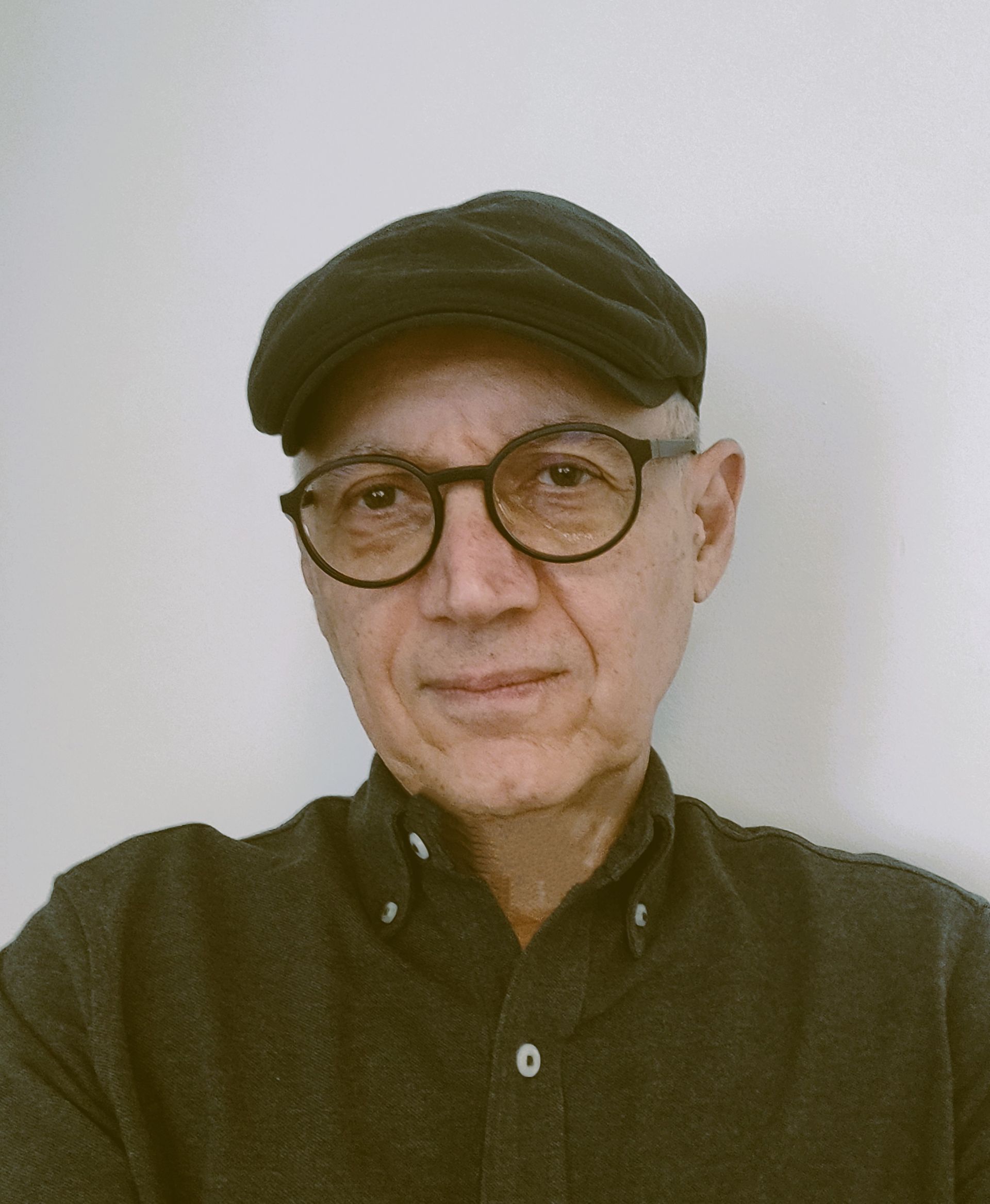
View Biographical Sketch
Ardeshir Mahdavi is an internationally recognized authority in Building Science. He conducts research in building physics, building ecology, computational building modelling, and human ecology. Prior to his current affiliation at the Faculty of Civil Engineering Sciences, Graz University of Technology, professor Mahdavi held positions at the Carnegie Mellon University, Technical University of Vienna, and National University of Singapore. Professor Mahdavi has published over 700 scientific papers and has supervised over 65 doctoral students. Professor Mahdavi is a frequent keynote speaker at international scientific conferences. He is the recipient of the prestigious IBPSA Distinguished Achievements Awards.
Topic
Does BIM have any value(s)?
Abstract
The usefulness of artifacts, the performance of systems, and the productivity of processes can be measured in different ways. This applies also to the design, construction, and operation of buildings. One way to conduct such a measurement is to take two general criteria into consideration, namely the efficiency and the effectiveness. Efficiency can be understood here as the ratio of the intended output of a product or a process to the input invested to bring about such output. Effectiveness, on the other hand, concerns the meaningfulness of the intended output itself:
We may be highly efficient in the process of creating a specific product and thus "doing things right", but we could be thereby highly ineffective, in case we are not "doing the right things", that is if we create a harmful or destructive product. Whereas efficiency can be argued to be more or less value-free and narrowly focused, effectiveness is value-driven in nature and broad in scope. This keynote lecture explores the implications of the differentiation between efficiency and effectiveness perspectives for Building Information Modeling, both as a tool, and as a process. To this end, we follow a trajectory from individual instances to global trends, from narrowly defined utilitarian views to highly inclusive performance definitions, and from mere pursuit of isolated targets to objectives that are informed by a richer conception of values.
Prof. em. Dr. Gerhard Schmitt

View Biographical Sketch
Prof. Gerhard Schmitt is Professor emeritus of Information Architecture at ETH Zurich and Founding Director of the Singapore-ETH Centre for Global Environmental Sustainability. From 2008 to 2017 he was Senior Vice President for ETH Global. As Vice President Planning and Logistics and member of the ETH Board from 1998 to 2008, he initiated the projects ETH World, Neptun, Science City and the Singapore-ETH Centre. Between 1992 and 1998, Gerhard Schmitt was Professor of Architecture and Computer Aided Architectural Design (CAAD) at ETH Zurich. His research and teaching areas are Cooling Cities, Citizen Design Science, Responsive Cities, the simulation and visualization of cities, and spatially distributed collaborative design in massive open online courses. He was born in Mainz in 1953 and received his Dipl.- Ing. degree in Architecture from TU Munich. After studying at the University of California in Los Angeles and Berkeley, he graduated as a Master of Architecture in 1981. He completed his doctorate at the Technical University of Munich in 1983 on the topic of energy and architecture; taking into account computer simulations as decision-making aids in the design process. Following a one-year research and teaching stay at the University of Manitoba in Canada, he became Assistant Professor in 1984 and Associate Professor of Architecture at Carnegie Mellon University in Pittsburgh, Pennsylvania in 1987. After moving to ETH Zurich in 1988, he started with the development of systematic CAAD research, teaching and infrastructure. In research, he led Swiss National Science projects in artificial design intelligence and computer-aided communication to create intelligent design aids. In cooperation with industry and practice, he and his team created programs for graphical learning systems and integrated simulations of new buildings. From 1989-1996 he headed the Computer Science Commission of ETH Zurich. He was visiting professor at Harvard University, TU Delft and Leuven. In 1994, he was elected Dean of the ETH department of architecture. He presided the Swiss Computer Graphics Association and became chairman of the visiting committee of the Graduate School of Design of Harvard University from 2004 to 2007. From 2010 to 2015, he led the Simulation Platform at the ETH Future Cities Laboratory in Singapore, starting in 2015 the Responsive Cities Scenario and in 2018 the Cooling Singapore Project.
Topic
Beyond Sustainability: Generative Future Cities
Abstract
Advanced Product and Process Modelling is key not only for the AEC/FM industry, but also for the planning, design, construction, and management of all human settlements. Product and Process Modelling offers a scientific, conceptual, and practical base for cities to become generative. The topics of this conference: Data for Life, AI and Knowledge Engineering, Intelligence in Building Design, Robotics and Digital Twins, are part of the urban research agenda worldwide. Making their results available through education helps to achieve the necessary transformation of our settlements from consuming and polluting entities towards generative physical organisations that produce more than they take. Intellectually, cities achieve this goal for their citizens, especially when they move from the smart city towards the responsive city.
The Digital Urban Climate Twin we built at the Singapore-ETH Centre together with local universities and government agencies employs a federation of models and uses multiple data sources ranging from geometry, transportation, density, vegetation, to micro-, local- and regional climate. The purpose of the Cooling Singapore project is to mitigate the urban heat island effects and to keep urban temperatures from rising. For researchers and planners, it now becomes realistic to take urban simulation to the next level. Extending the federation of models and generative AI towards a Digital Human Settlement Twin is a natural next step. Examples from Singapore, Neom, Porto Alegre and Switzerland provide an outlook on local applications.
Prof. Dr. Žiga Turk
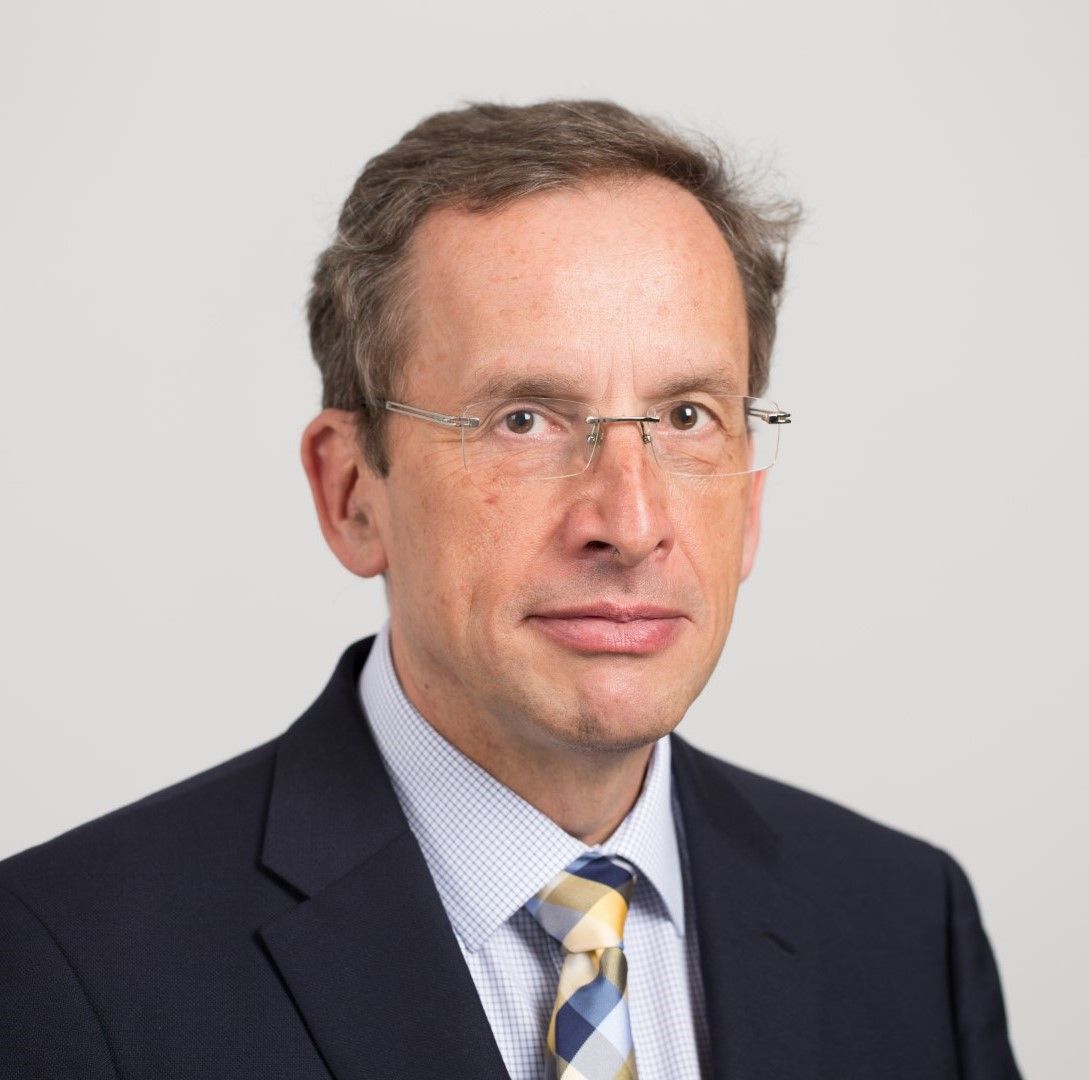
View Biographical Sketch
Dr. Žiga Turk (1962) is Professor in Construction Informatics and Documentation and Vice-Dean at the Faculty of Civil and Geodetic Engineering at the University of Ljubljana. Originally a structural engineer, he has M.Sc. in computer science and PhD in technical sciences.
His academic interests include construction informatics, construction information technology, computer integrated construction, sustainable construction, theoretical basis of process and product modelling and building information management (BIM), engineering communication and the related aspects of technology and philosophy. He studies modern forms of learning, knowledge transfer, internet science and responsible researching. He published over 50 papers in scientific journals, delivered 20 keynote and invited lectures and over 140 reviewed conference papers.
He had an important role in eight EU framework projects. He is the founding editor of international scientific journal ITcon, Associate Editor of Automation in Construction and editorial board member of a few other international journals. In his public duties he was twice minister in the Government of Slovenia, Secretary General of the Reflection Group on the Future of Europe at the European Council, carried out an interim evaluation of Framework 7 and Horizon 2020 Programme and chaired a High Level Group about the future of European academic networking (GEANT).
Topic
Reflections on Product and Process Modelling
Abstract
Since the late 1980s construction has been fixated on the idea of product and process modelling. The topic evolved into building information modelling, project information modelling, asset information modelling and the creation of digital twins. In this process, there are some features which are good - like providing more and better information. And there are features which are original - like creating increasingly detailed digital representations of existing or imagined buildings. However, as someone quipped, what is original is not necessarily good and what is good is not necessarily original. The contribution will address some fundamental issues about product and process modelling that are making this research topic sustainable in spite of enormous effort and progress over the last 30 years. The three key issues are: (a) semantics cannot replace pragmatics, (b) models will never be as rich as reality, (c) computer integrated construction will never be. This creates unlimited challenges for the scientific community but does it address industry needs?
Dr. Alain Zarli
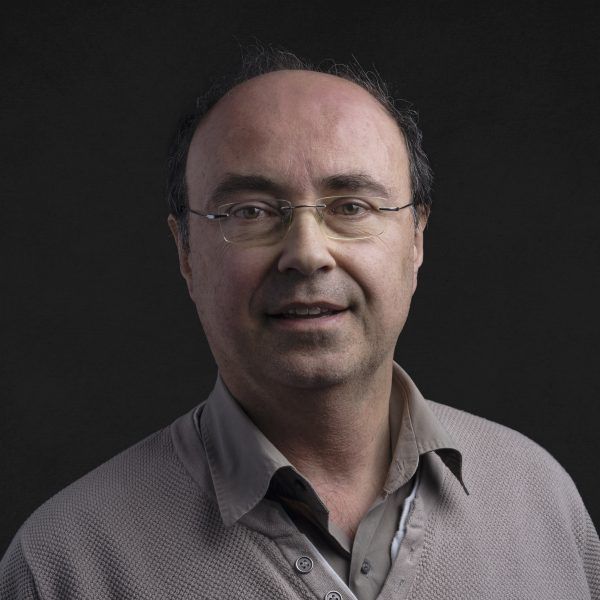
View Biographical Sketch
Dr. Alain Zarli is Managing Partner at R2M Solution and Secretary General of ECTP, the European Construction Technology Platform. He was formerly Head of the “Innovation Numérique pour la Construction” division at the Centre Scientifique et Technique du Bâtiment (CSTB) in the “Technologies de l’Information et Diffusion du Savoir” department (Sophia-Antipolis - FRANCE), and European Affairs manager in CSTB.
His main fields of interest are Information and Communication Technologies (including programming languages and compilation, semantic modelling, rule-based languages and knowledge-based systems, distributed architectures, software components, and technologies for smart constructions) and their broad application to the Built environment and the Construction industry, in particular BIM and Digital Twin technologies. He has been the Project Coordinator of various European collaborative FP5, FP6, FP7 and H2020 projects.
He is in support since a long time of ECTP initiatives (the E2B cPPP, the “Energy & Efficient Buildings”, “Active Ageing & Design”, “Infrastructures & Mobility” and “Digital Built Environment” Committees) in roadmapping and impact assessment, and is now responsible of the Built4People Partnership under the Horizon Europe Framework Programme too. He has been acting as expert for the review of various European R&D projects on behalf of the European Commission and has been participating in the European Commission Advisory group for ICT Infrastructure for energy-efficient buildings and neighbourhoods for carbon-neutral cities. He has been acting as leader of the “Open Data” Action Group in the European Innovation Partnership Smart Cities and Communities (EIP SCC), and has contributed as expert to the EIP SCC Operational Implementation Plan, in particular in the “Sustainable District and Built Environment” Action Cluster. He is the organiser and board member of various conferences in the past and present, including IEEE/ICE, CIB W78, ECPPM, as well as the series of ECTP conferences.
Topic
Research and Innovation in Construction: a European perspective on IT challenges and future developments
Abstract
The Built Environment (buildings, infrastructures, physical networks, etc.) is facing a radical digital transition, in the global framework of new technological domains such as Big Data and Construction Data spaces, Digital Twins, and AI-based applications. Such a deep transformation is to support the future delivery of a more sustainable, resilient, inclusive, and enriching built environment, and both Research and Innovation (R&I) are key drivers in such transformation. In this context, the ECTP, as the leading membership organisation promoting and shaping the future of the built environment and Construction sector in Europe, has recently redeveloped a sectoral Strategic Research and Innovation Agenda (SRIA), fostering collaboration between European stakeholders of Construction and Built Environment value chain, so as to identifying R&I challenges, barriers, gaps and opportunities in the Construction industry, and promoting the rolling-out the solutions that will help taking up the societal, environmental, industrial, and technological challenges faced by the
industry.
This keynote will introduce to the 3 main pillars identified in the ECTP SRIA, based on a review of the environmental, technical, and societal challenges faced by the Built Environment together with an analysis of the key technological trends - and followed by a thorough review and workshop-based and interview-based discussions with ECTP members and European experts. The keynote will further focus on the 3rd pillar of such SRIA (entitled ‘Competitive, digitalised and circular value chain‘), targeting the nurturing of a future competitive circular Construction value chain, leveraging on the sector needs to pursue its effort towards digitalisation as a driver for knowledge sharing, high quality of data, and sustainability of the built assets. After a re- view of the main R&I priorities, the keynote will introduce to the main challenges and future required developments in terms of new technologies supporting advanced digital applications and services based on big data, digital twins and AI advanced concepts, and discuss opportunities raised by their future propagation in embedding them in Construction processes and built assets. The ECTP SRIA has fed the European Commission’s agenda (and in particular the Horizon Europe Framework Programme) regarding R&I funding for digitalisation in the Construction industry and the Built environment sector.
Contact information
Visitor Address: Institut für Bauinformatik, Nürnberger Str. 31a (2nd floor), 01187 Dresden
Email: ecppm2024@tu-dresden.de
Organized by
